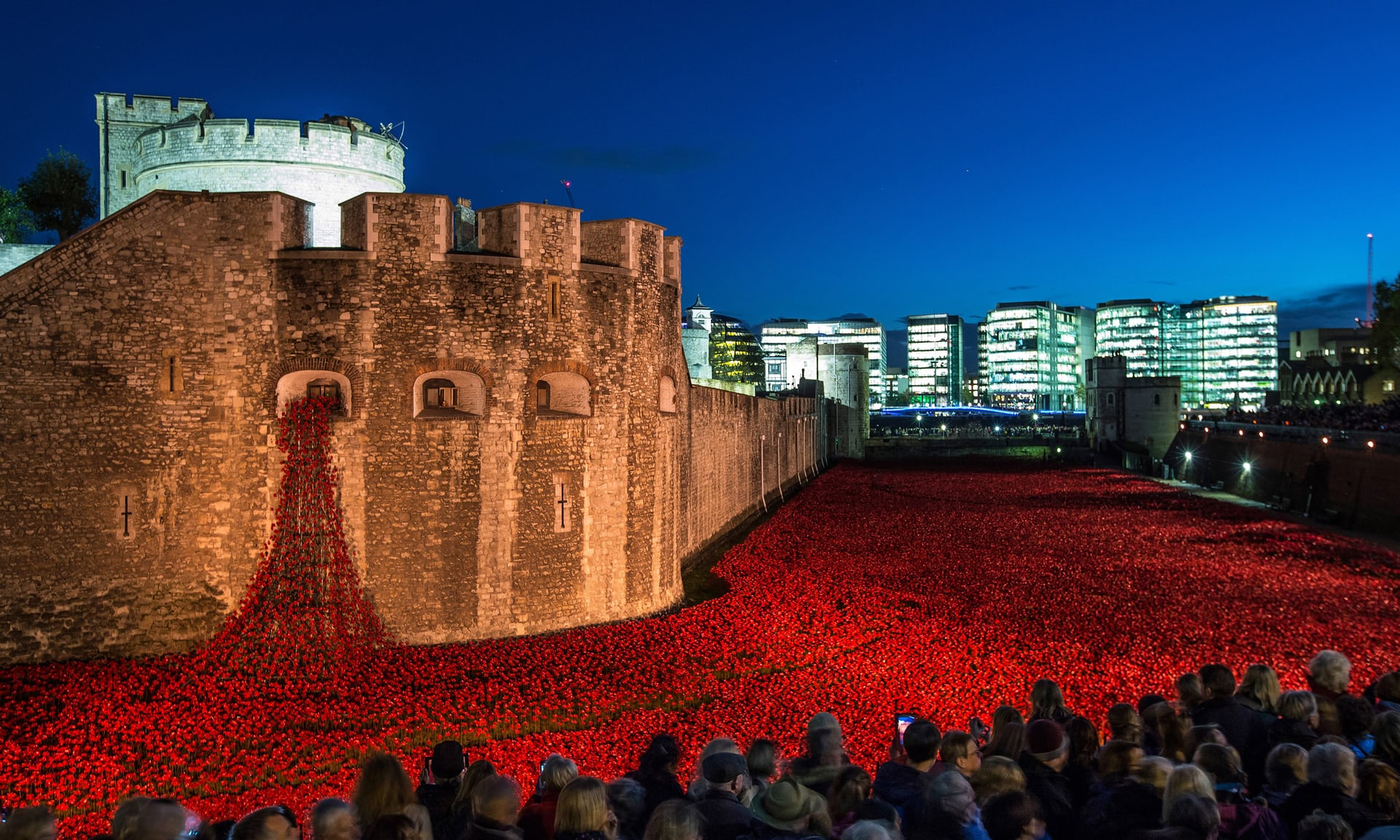How we made the Tower of London poppies
It took 300 of us a year to make 888,246 flowers. We sprayed them red and counted them. Then the Beefeaters counted them. This was vital – every lost soldier had to be represented’
Paul Cummins, artist
One rainy day in 2012, I ducked into my local library for shelter and, for some reason, started looking at wills. I found one written by a woman from Derby who had disguised herself as a man and gone off to fight – and die – in the first world war. She had written her will phonetically, which made it easier for me to read as I’m dyslexic. That was one reason why I connected with it. Another was the phrase: “Blood swept lands and seas of red where angels fear to tread.” It leapt out at me, made me think about the war’s death toll. With a bit of research, I discovered that there had been 888,246 British and Colonial military fatalities.
I decided to represent those deaths through ceramic flowers, something I had first started making at university. Ceramics are transient and fragile, like we are. They feel part of our very humanity – societies have always been carbon-dated by their ceramics and pottery. I considered making roses, which symbolised sacrifice in Victorian times, but I settled on the poppy because of its links to WAR and remembrance.
I needed a large space so that people could walk all around the installation. While I wanted it to be free, I was keen to have a venue that was historically significant. The Tower of London was the fourth place I tried. I got put through to someone by sheer chance: the Tower’s deputy governor has a friend also called Paul Cummins and they thought I was him. I didn’t stop talking until a meeting had been agreed. Then I did lots of drawings and presented them with a flower I’d made to show them what it might look likeMaking nearly one million ceramic poppies is a long process. Each had six petals, one for each charity I wanted to support with money raised from selling the poppies afterwards. I did nothing but make flowers for almost a year: 300 people at three different sites rolled, cut and shaped every poppy by hand. Each one is unique. By the time we’d stacked them all up to dry, on piles of boards raised by bricks, the studio looked like it was full of trenches. We sprayed them red and counted them in and out, then the Beefeaters counted them all again at the Tower. This was vital. Every single life had to be represented.
A huge team of volunteers planted them all in the moat. One, a soldier who’d been injured by an explosion in Afghanistan that had killed half his regiment, told me the poppies he was planting represented the friends he had lost. As you looked out onto the sea of red, you felt overwhelmed by the thought of so many people sacrificing themselves for what we have now.
Tom Piper, designer
Of course it was an exciting and bold project, but at the point of planning I was worried that there would be so much first world war memorabilia and associated events that people wouldn’t be interested and that first world war fatigue would have set in.
I started thinking about whether there was a way it could relate more closely to, and engage with, the Tower itself. Given that you can’t see the moat until you’re right on top of it, we needed something you could see from a distance. So I designed Weeping Window: the moment you came out of the tube station, you could see poppies cascading out of the Tower’s bastion window. It became the starting point, the place all the poppies flowed out from and crept around the Tower. A second section, Wave, was visible from across the river.
‘The success took us all by surprise’ … Tom Piper, left, and Paul Cummins at the Tower.
‘The success took us all by surprise’ … Tom Piper, left, and Paul Cummins at the Tower. Photograph: David Levene for the Guardian
Planting all 888,246 poppies was a huge undertaking. It became a piece of performative art lasting four months, with people watching the volunteers at work and often applauding. Many of the planters had service backgrounds and brought their own powerful stories. Others identified an individual flower with a relative who’d died in the war and thus the planting became ever more meaninful
i sprayed contour guidance lines around the moat for the volunteers to follow, but they quickly started doing their own thing – putting higher ones in with lower ones and mixing things up, so that some areas were densely populated, others sparse. It made for a more living organic piece with its own natural energy and flow.
The Tower didn’t do a massive publicity campaign. Nobody really knew what we were doing. As we were planting, people would ask: “What are you up to?” So its huge success took us all by surprise. It was a genuine word of mouth phenomenon.
The last poppy went in on 11 November 2014 and the next day we started taking it down. There were calls to save the poppies, but we needed to get the flowers to the people who had bought them, not least as Paul had to recoup the costs of making them and get the promised money to the six charities. Two sections, Weeping Window and Wave, were bought and gifted to the nation, which meant we could tour them around Britain. By the time we finish in November, as many as five million people around the country will have seen the poppies.